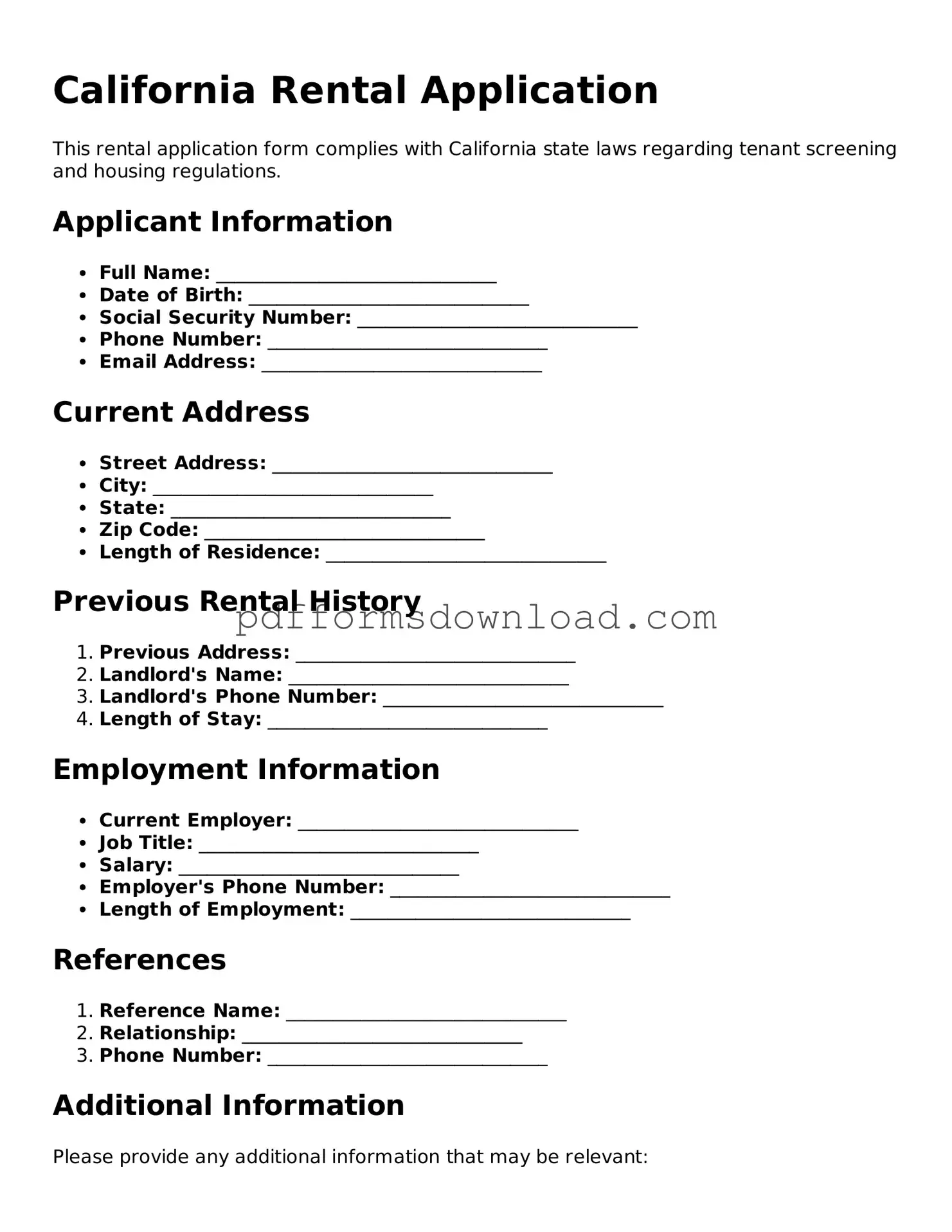What is the purpose of the California Rental Application form?
The California Rental Application form serves as a tool for landlords to screen potential tenants. It collects essential information about an applicant's background, financial status, rental history, and personal references. This helps landlords make informed decisions regarding lease agreements.
What information is typically required on the application?
A standard California Rental Application will generally request personal details such as the applicant's name, address, and contact information. It may also ask for employment history, income verification, previous rental addresses, and references. Additionally, applicants may need to provide consent for background checks.
Is there a fee associated with the rental application?
Yes, landlords may charge an application fee to cover the costs of processing the application, which can include background checks and credit reports. Under California law, this fee must be reasonable and cannot exceed the actual costs incurred. Applicants should be informed of the fee amount prior to submitting their application.
Can a landlord deny an application? If so, why?
Landlords can deny an application for various reasons, including insufficient income, poor credit history, or negative rental references. It is important for landlords to apply these criteria consistently to avoid discrimination. If an application is denied, the landlord is generally required to provide a reason, especially if it relates to credit history.
What rights do applicants have regarding their rental application?
Applicants have the right to know the criteria used for screening and to receive a copy of their credit report if it was a factor in the denial of their application. Furthermore, they are entitled to be treated fairly and without discrimination based on protected characteristics such as race, gender, or disability.
How long does the application process typically take?
The length of the application process can vary. Generally, landlords aim to process applications within a few days to a week. Factors such as the responsiveness of references and the complexity of background checks can influence the timeline. Clear communication from the landlord can help manage applicant expectations.
What should an applicant do if they are denied?
If an applicant is denied, they should first request a written explanation from the landlord. Understanding the reasons for denial can help applicants address any issues. If the denial was based on inaccurate information, applicants can dispute the findings with the credit reporting agency or seek legal advice if they believe discrimination occurred.
Are there any protections for tenants regarding application fees?
California law provides some protections concerning application fees. Landlords must provide a receipt for any fees collected and must return fees if the application is not processed. If an applicant is denied, they may be entitled to a refund of the application fee if the landlord does not proceed with the rental. It is advisable for applicants to keep records of all transactions related to their application.
